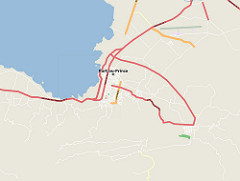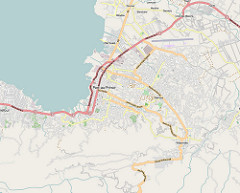Rescuers in Haiti using OpenStreetMap
 the picture on the left OSM map before the earthquake. Right — as of January 14, two days (!) after the earthquake. This is the result the works of participants OpenStreetMap that drew them. I think that this was not able to even Google. And now there is this specification that I just can't believe this is Haiti, not new York.
the picture on the left OSM map before the earthquake. Right — as of January 14, two days (!) after the earthquake. This is the result the works of participants OpenStreetMap that drew them. I think that this was not able to even Google. And now there is this specification that I just can't believe this is Haiti, not new York.Here they say that all the cards Haiti was paper-based and outdated, and maps suitable for navigation simply did not exist. The blogs were much thanks to OSM contributors, a couple of days making not only the map, but a set of actual marks (tent cities, hospitals) on it.

Next quote, but under the cut there are more quotes and references.
I'm Port-o-Prince Search-and-rescue team from the US. I wish there was a way that I can adequately tell you how important your OSM files. The majority of our team members have their own devices Garmin Rino and 60CSx. To have such detailed maps on our GPS is a big deal. Soon after discovering your work I quickly told everyone and how we could upload the map with detail at the level of the streets on a Garmin before sending the American rescue teams on the streets. Team members were amazed that they have this resource that you have created. I wanted you saw the glow on their faces when I gave them the GPS device and told them that I was going to give them a card with detailed street-level. They worked VERY hard and everything that could help them in every aspect of our mission here is highly appreciated. I spoke about this work to all rescue and humanitarian teams here in Haiti. Please be assured that we use your data — I'd just like to know about them early. THANK YOU!
blog Post OpenGeoData from January 24, learn more tut.
there Were at least 400 edits to OpenStreetMap Haiti after the earthquake. The majority of delineation images Yahoo, and a thorough collection of information from old maps of the CIA. We also just received permission to use GeoEye images taken after the earthquake, which will allow us to note the collapsed buildings.
blog Post OpenGeoData from 14 Jan
Also to quote a wonderful post Map Haiti for rescue from OpenStreetMap:
"Pay attention to the fact that it was drawn not for years, not months, and for a few days. That is indeed where no team work is not enough. One person would not have anything to do in a case such as the situation in Haiti. I have met many foreign blogs of gratitude to the OpenStreetMap team, because the map from Google in terms of disaster was not very usable, whereas on the map the OSM every day there were new marks, debris, the gates of the camp victims – all relevant information. At this time, an open-source project clearly outplayed giant Google. Despite my love for the Internet giant, I'm glad the superiority of OpenStreetMap in this case."
But, by the way, Google is also well done. You would be able to make a Chukchi-Russian translator in two weeks? =))
UPD: Great posts with good links to the blog.kosmosnimki.ru/2010/01/20/crowdsourcing_haiti osm.komzpa.net/index.php/2010/01/25/gaiti-sos-help-us
UPD2: As I understand it on Habre there are people who helped OSM in various ways: gislab and godnik.
Комментарии
Отправить комментарий